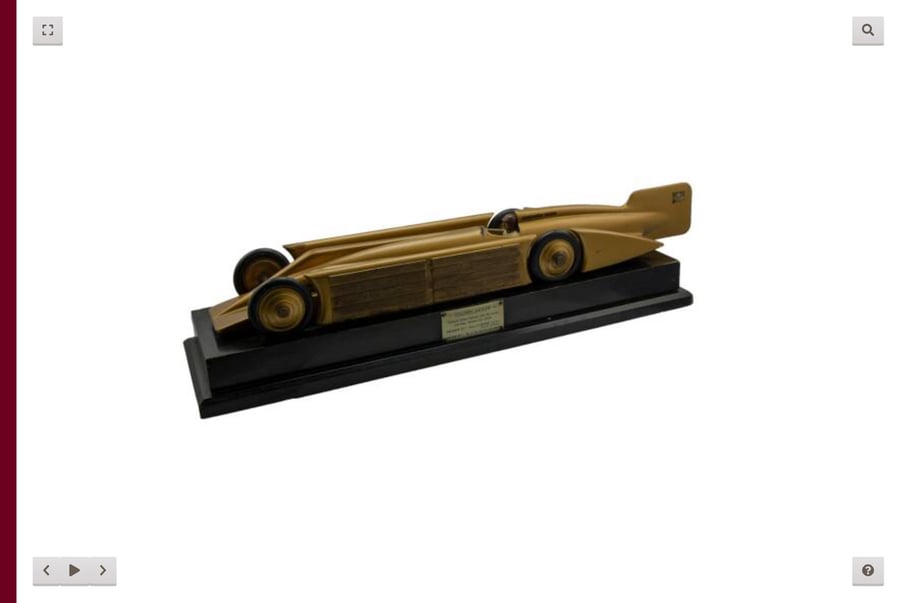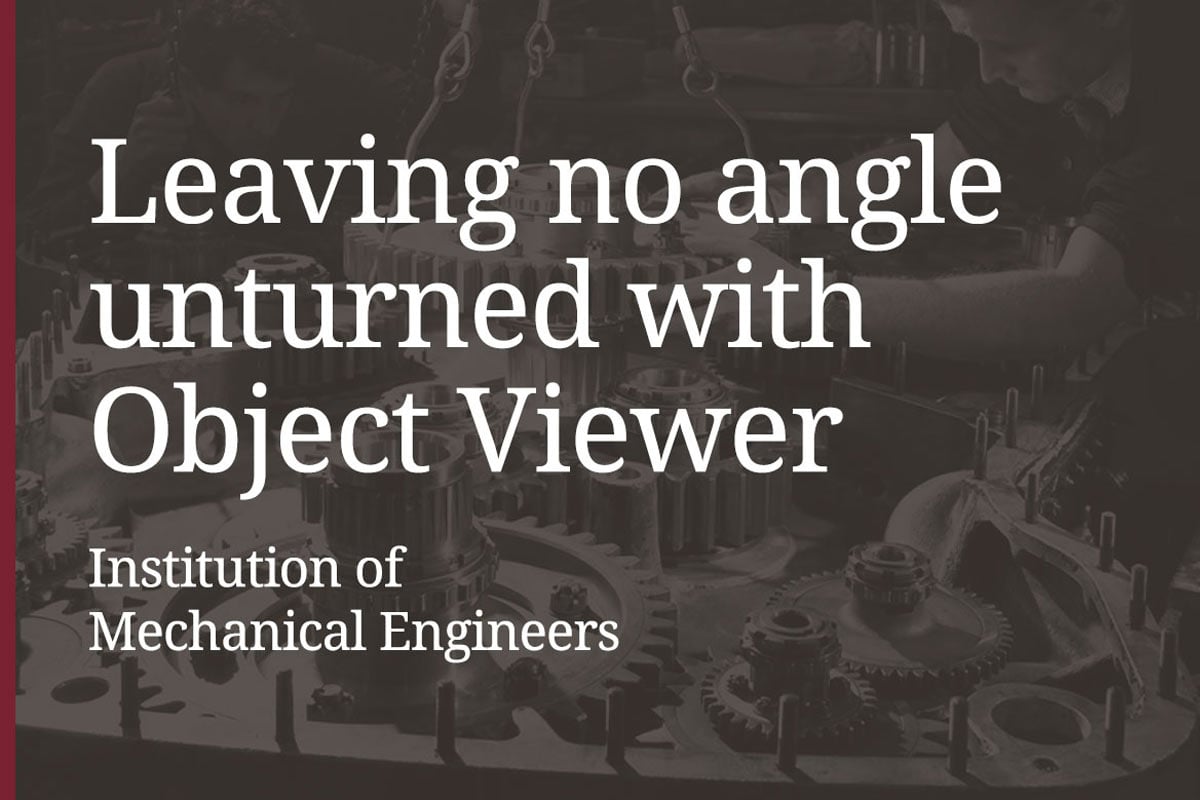We are always looking at ways to make PastView even better, to provide the solutions the industry is looking for. We do this through continued analysis, feedback, developments and feature releases. These feature releases fall into three distinct areas: the management of your digital collections, the publishing of items for increased access and discoverability, and the revenue generation that can be achieved from your most valued material, to help financially support the upkeep of your organisation’s archive.
It is feedback that drives a great proportion of this process, offering us the insight necessary to determine success and guide our creative vision. Therefore, it is greatly appreciated when someone within an organisation, being the first to incorporate one of these new features, is happy to share their experience by way of review.
Lucy Bonner, Archivist at the Institution of Mechanical Engineers, is one of these people, and she has kindly agreed to talk to us about PastView’s 360 Object Viewer. You will find a really great overview as Lucy takes us through how this publishing feature applies to IMechE’s material, how it has opened up accessibility, and how it engages users visiting the IMechE Virtual Archive.

In the following article, I will be focusing on two main areas:
TownsWeb will be explaining the technology behind the feature beneath the heading:
It is possible to see IMechE’s 360 Object Viewer in action for yourself using some of the most popular items in our collection. These are the Napier Sabre V aero engine, George Stephenson’s Cucumber tube and James Nasmyth’s Steam Hammer. In order to monitor engagement and popularity across the whole site we use Google Analytics, linked to our Virtual Archive.
The Cucumber tube is possibly one of the most popular items because it has an interesting backstory, having been used by railway engineer George Stephenson to try and grow straight cucumbers! We also have a section of rail on which, in 1804, Richard Trevithick ran his wheel mounted steam engine, in what was the first journey by a rail mounted locomotive. Our model of James Nasmyth’s Steam Hammer is 50cm tall and made at a scale of 1:8, making the original steam hammer over 4 metres tall! These are unique items and details that are of great interest to our visitors, hence they have been accessed using 360 Object Viewer the most.
One of the main reasons we wished to implement the 360 Object Viewer was to be able to display those objects that are ordinarily kept in our stores and are otherwise inaccessible. 360 Object Viewer enabled us to provide access to these objects virtually, and in a way that was as authentic as someone could get without needing to see the object in-person.
IMechE is a global Institution with headquarters in London and, whilst many of the objects in our collections are on display around the building, these can only be seen by those members visiting in person. Unfortunately, not everyone is able to do that. 360 Object Viewer has allowed us to provide an enhanced visitor experience to those who are unable to visit physically, enabling access through our Virtual Archive. In many cases 360 Object Viewer has even managed to enhance the viewing experience of those who can view in person, there being fewer barriers to the 360 degree angles from which objects can now be viewed, as well as the ability to zoom and view in much finer detail.
We launched with PastView in March 2016 having previously used TownsWeb for the digitisation of some of our microfiche. We heard about PastView when we were looking at how to store and search the fiche. PastView was demonstrated as a way to achieve this and we realised the potential it had for displaying our digitised material, as well as additional information about the Institution’s history.
PastView has allowed us to publish our collections online in a user-friendly way. Users can browse or perform a keyword search. PastView has also enabled us to improve access to our collections, such as our council minutes, making use of Optical Character Recognition (OCR). We can now display the whole breadth of our collections; including documents, photographs, engineering drawings and objects. We can also share our volumes using BookExplorer.
Personally, I was really pleased with how easy it has been to set up and use the 360 Object Viewer. We are able to upload objects in-house and adjust the settings to suit our collections. We have also recently discussed the creation of sub collections that can be displayed alongside each other, to show the same object but in different ways. For example, displaying a vehicle with its doors open and the same vehicle with its doors closed, each of which can be viewed independently as 360 degree objects. This adds a whole new level of engagement.
This is our experience as the first users of 360 Object Viewer, and I hope that you find this informative and useful when thinking about your own archive and online collections.
Now over to TWA!
What a great overview of 360 Object Viewer in action from Lucy. So what about the ‘how’ bit? Here we will take a look at 360 Object Viewer’s functionality, what’s involved in setting it up, and what you can expect your users to be able to do with it.

Let’s look at IMechE’s ‘Golden Arrow’ as an example:
This sits as a collection in PastView, though it looks like a single item.
How the collection is created
The collection is made up of a series of images that represent each frame of the 360 view, in the order they should show in. The order they should show in is also the order that they should be photographed in. The metadata you see on the right (using the image above) comes from the first image in the collection.
Switching the display from thumbnail to 360 Object
By switching the display type of a collection in PastView to ‘360° Object’ the collection no longer shows as a list of thumbnails (like in the image below) but as the 360 spinner at the start of this section.
Display options
The 360 viewer can be configured within the PastView platform with several options, which directly affect how it interacts on the web site. The image below (left) shows a number of functions: rotation direction, whether you want the image to rotate automatically, and pan controls. On the front end in the image below (right) this appears with options for full-screen using the top-left button. There is also a button that switches to rotate mode, which enables users to drag the object to rotate it. Alternatively, the buttons in the bottom-left can be used to do this.

There is also an ‘examine’ mode, which changes the controls to enable pan and zoom for closer inspection (illustrated in the image below).

So there it is, in a nutshell; our 360 Object Viewer in action, how it’s enabled with PastView and a step-by-step guide to setting it up for each of your items - as well as an explanation for the many ways your users can engage and interact with it.
A Final Note
You can explore IMechE’s wonderful archive and their use of 360 Object Viewer by visiting their Virtual Archive.
Again, a huge thank you to Lucy for sparing us the time to answer our questions and offer us some really valuable insight into how IMechE are using PastView’s 360 Object Viewer, and what incorporating it has meant for this wonderful collection and the incredible history of engineering.
Next Steps
If you would like to find out more about PastView and 360 Object Viewer or, indeed, any of PastView’s features, then click here to book a demo.



